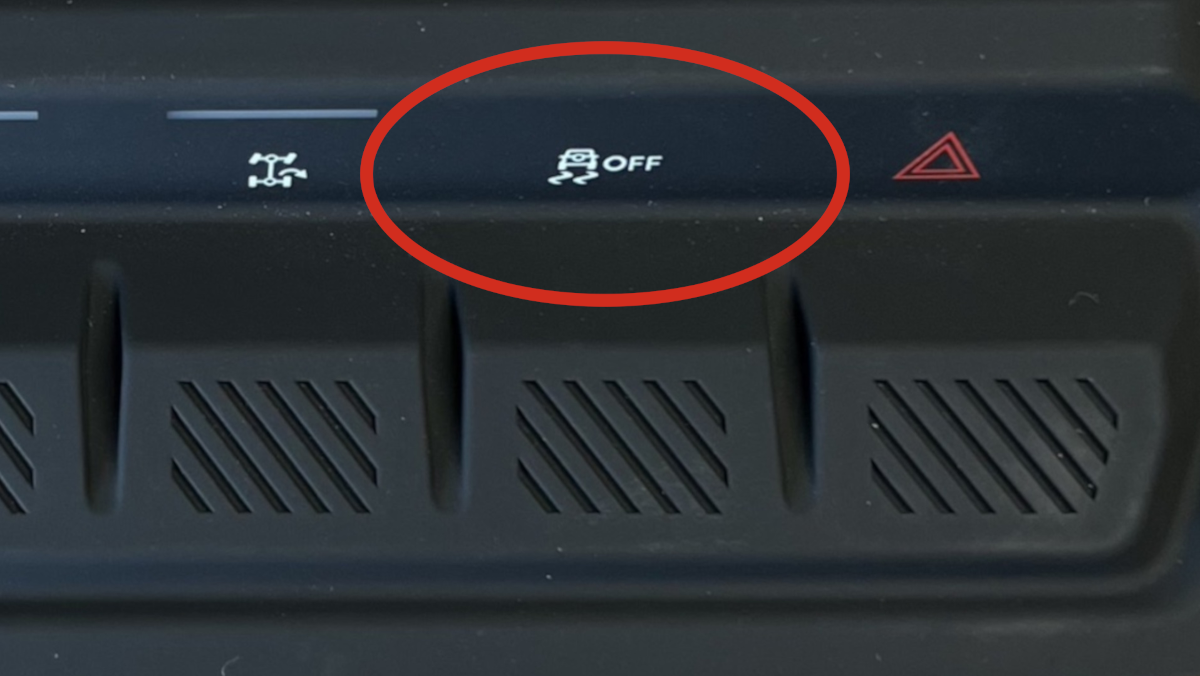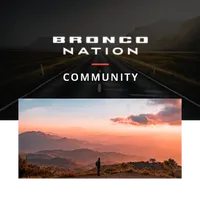Winter is hitting most of the Bronco Nation right now. For some of us, it may be time to retire from the trails and make our Christmas lists of hoped-for parts that we’ll use next spring. But for those of you who’ve never experienced a snow-covered trail through the woods, you may be missing out on some of the best experiences of the winter.
Off-roading in the snow, although beautiful and fun, requires some careful planning, including the type of tires to use, current and pending weather conditions, and what to pack. In this article, we'll explore how to make the most of your winter off-road adventures with your Bronco or Sport, emphasizing safety, group dynamics, proper equipment, and essential items.

Choosing the Right Tires
As I mention to guests every time that I guide for the Bronco Off-Roadeo, there are only two factors that will allow your Bronco to complete any trail: traction and clearance. One component of your Bronco that heavily impacts both conditions is tires.
Although it seems that larger mud-terrain tires will always work best in wintry terrain, that is not correct, and not all brands of tires perform the same. Some tire brands remain soft in colder temperatures, which results in increased performance in snow and ice. The lack of siping and the chunkiness of M/Ts can result in a loss of traction, especially on icy pavement. You can read up on off-road snow tires and brand testing in this MotorTrend article.
Airing Down for Improved Traction
Airing down your tires is a crucial step to increase the footprint and enhance traction on snow-covered trails. Lowering tire pressure allows the tires to conform better to the uneven surfaces, improving grip and reducing the risk of getting stuck. It’s important though, to know the kind of snow you’re traveling in. Heavy snow is different than powder.
The goal of airing down in snow or sand is to create flotation, an effect where the tire footprint combined with the right momentum lets you glide through the terrain. What is the right tire pressure? It’s not the same for all vehicles and all tires, so I recommend finding a default starting point and adjusting from there. For me, that number is 25 lbs., but do your research. Don’t forget your air compressor for airing up at the end of the trail.
What Trails Should You Drive?

The first consideration in winter off-roading is to research and select trails that are open and suitable for winter driving. Use of trail apps may be helpful to help you scout a route. I always recommend going out on your first snow excursion with a group that’s experienced and familiar with the area. This dramatically increases the level of safety and helps remove that anxiety of getting stuck. Check existing trail conditions and pay attention to weather forecasts to avoid getting into a dangerous situation. A few inches of snow are fun; a few feet can spell disaster. Always inform someone of your exact travel plans and expected return time when venturing into remote areas, even when going out with a group.
G.O.A.T. Modes and Traction Control
The G.O.A.T. Modes can be useful in snowy conditions. These modes optimize the vehicle's performance in that terrain, changing shifting points, distributing power efficiently, and adjusting traction control to keep you moving forward. Combining these modes with the use of lockers as needed, in especially deeper snow or icy areas, and maintaining momentum without sudden stops can prevent you from getting stuck.
Slippery Mode is great on pavement, but once you hit the trail, try either Mud/Ruts or Sand Mode, which are both great to use when off-roading in snow, and when the snow gets really deep. These Modes open –– without fully disabling –– the added safety constraints put forth in Normal, Eco, and Slippery Modes. 4H will also be engaged in base ESOF (Electric Shift On-The-Fly) transfer case, 4A with EMTC (Electro-Mechanical T-Case), and if available, the rear locker will come on. Note: You have the option to change these default states. In a nutshell, you’ll get more torque to the wheels based on pedal travel, holding lower transmission gears, quicker throttle response, more tire spin, and less brake stability control.

For extreme driving, you may want to turn off both Traction Control and AdvanceTrac. This happens automatically when the T-case is placed into 4L. Note also that both Traction Control and AdvanceTrac will turn back on after a key cycle, or if you cycle again through the various G.O.A.T. Modes. To turn off Traction Control, depress the Traction Control switch and hold it for ~5 seconds. You will first see the “Hold for AdvanceTrac Off” message pop up on the cluster. Then you will see the “AdvanceTrac Off” message (both below). This takes the “no boundaries” level up another notch and is recommended for off-road driving only, in Mud/Rut or Sand Modes. Lots of torque, lots of RPM, lots of wheel/tire slip, reduced brake intervention, thus more yaw or rotation. Be cautious at first, get used to it, have lots of wide-open space, and adjust to your driving skills!
Trail Control
If you have an automatic transmission in your Bronco or own a Bronco Sport First Edition or Badlands trim, your vehicle is equipped with Trail Control. It is indicated for off-road use to maintain a set speed in varying terrains and can apply throttle and braking to hold a set speed between 1-20 MPH.
One of the places I could foresee using it in snow would be in an especially steep descent where there is concern of sliding or locking the brakes. The computer software can sense the changes in traction and apply braking to control descent. It may also be helpful in extracting your Bronco in a stuck situation; it’s worth a first try before getting the recovery gear out.
Mastering Driving Techniques
Snow demands a different set of driving techniques compared to other terrains. Every action, including braking, acceleration, and steering, should be executed slowly and deliberately to prevent sliding and loss of control. Gradual inputs help maintain traction and stability on slippery surfaces. In softer snow, achieving tire flotation is crucial to prevent your Bronco from sinking, as it will behave very similar to driving in sand. Lowering tire pressure primarily aids in this, but it's also essential to keep momentum, and avoid abrupt stops and starts that can lead to getting stuck. Like driving in sand, decisions should be made on where to stop. Coming to a stop on a snow-free trail or in a slightly downhill situation can aid in getting restarted again. This isn’t always possible, but good communication with other members of the group can help. Following too closely to the Bronco in front of you can often lead to unanticipated stops or can cause multiple vehicles to become stuck at the same time. Take turns being the leader, and everyone space out accordingly.

Items to Carry in Your Bronco
Getting stuck may be the name of the game with snow wheeling, and we’ve spent many trail days taking turns “breaking trail” through drifts and taking turns pulling each other out. Whether you’re venturing out into the mountains or exploring a trail with only an inch or two of snow, you should always have a full recovery kit and emergency supplies in your Bronco.
Essential items include a good shovel, traction boards, and recovery straps. Beyond recovery, you should be prepared for the weather, both the daily highs and nightly low temperatures. During the daytime, you may feel comfortable in only a light fleece; however, if trail challenges keep you out after darkness, you need to be prepared. Heavy coats, hats and gloves, boots, sleeping bags (one for each passenger), water, food, a Jetboil or way to heat that food and water, needed medications, and flashlights are all critical items.
Conclusion
Off-roading in the snow in your Bronco can be an exciting and rewarding experience, but it requires careful planning, the right equipment, and a respect for winter conditions. By choosing the appropriate tires, utilizing 4WD and G.O.A.T. Modes, and mastering driving techniques, you can confidently navigate snow-covered trails while enjoying the scenic beauty and challenges of winter off-roading.
Remember, safety should always be the top priority, and going with a group can enhance both the enjoyment and safety of your winter adventures. Have photos of having fun with your Bronco or Sport in the snow? Share them in the comments.

Comments
You must log in or register to post here.